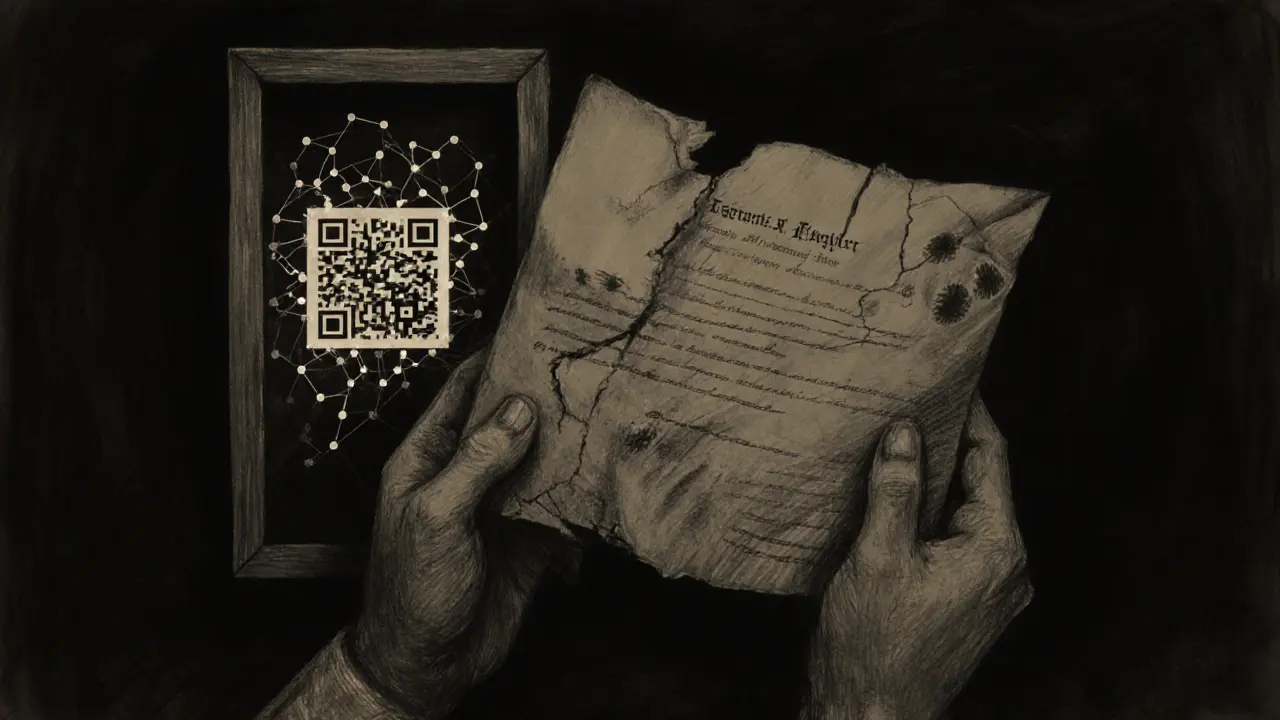Blockchain provenance offers an unchangeable digital record of art ownership, while traditional methods rely on fragile paper documents. Learn how blockchain stops fraud, boosts trust, and gives artists lifelong royalties.
Traditional Art Authentication: How to Spot Fakes and Verify Provenance
When you buy a traditional art authentication, the process of verifying the origin, authorship, and history of a physical artwork. Also known as art provenance verification, it’s not just about signing a certificate—it’s about tracing every step a piece took from the artist’s studio to your wall. Many people think a signature or a stamp is enough, but real authentication digs deeper. It looks at brushwork, pigments, canvas weave, restoration history, and even the type of varnish used. A painting signed by Rembrandt might look right, but if the pigments weren’t available until 50 years after his death, it’s a forgery. This isn’t guesswork—it’s science mixed with decades of expert observation.
Art provenance is the backbone of this process. It’s the documented chain of ownership: who bought it, where it was displayed, who restored it, and when it changed hands. A missing link in that chain raises red flags. Some forgers create fake documents to fill gaps, so experts cross-check archives, auction records, and even old newspaper ads. Tools like infrared imaging and X-ray fluorescence can reveal underdrawings or hidden layers that don’t match the artist’s known techniques. And it’s not just old masters—modern collectors face the same risks with signed prints, limited editions, and even folk art. A fake Picasso print might look perfect until you compare its paper density to the museum’s verified copies.
Art forgery isn’t just a historical problem—it’s growing. With online marketplaces and social media selling art at lightning speed, buyers often skip due diligence. A $20,000 painting might be listed as "from a private European collection" with no paper trail. That’s where art verification, the practical steps taken to confirm an artwork’s legitimacy using technical and documentary evidence becomes critical. Reputable labs, university research centers, and certified appraisers use databases like the Art Loss Register or the Getty Provenance Index to check for stolen or disputed pieces. Even if a piece passes visual inspection, a single mismatch in provenance can drop its value to zero.
And then there’s the human factor. Some forgers are brilliant—copying brushstrokes, aging canvases with tea and dirt, even mimicking the artist’s handwriting on certificates. But they can’t replicate the context. A 19th-century French landscape might have a stamp from a gallery that didn’t open until 1912. A signed lithograph might use ink that wasn’t manufactured until the 1970s. These are the tiny inconsistencies that experts catch. art appraisal, the formal estimation of an artwork’s value based on authentication, rarity, condition, and market demand isn’t just about price—it’s a safety net. A good appraisal includes photos, measurements, condition notes, and a signed statement from a qualified specialist. Without it, you’re gambling.
What you’ll find in the posts below aren’t theories or opinions—they’re real cases. From a fake Van Gogh sold on eBay to a $5 million forgery exposed by a pigment test, these stories show how authentication works in practice. You’ll see how institutions like the Louvre and Christie’s handle disputes, how blockchain is starting to enter the space, and why some of the most convincing fakes were caught by a simple mismatch in signature style. This isn’t about becoming an art historian overnight. It’s about learning what to ask, what to check, and when to walk away. If you’ve ever bought or considered buying art, you need this knowledge. The next fake might look real—but it won’t fool you anymore.

